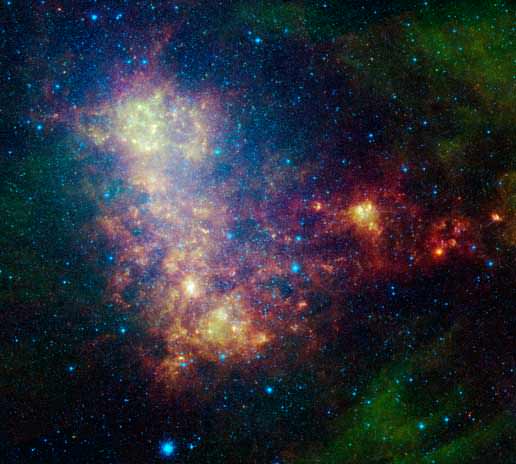This week at the AAC Conference, astronomers released a new image of the Small Magellanic Cloud (SMC, a dwarf galaxy just outside our Milky Way) from Spitzer. The purpose of the image was to study “the life cycle of dust in this galaxy.” In this life cycle, clouds of gas and dust collapse to form new stars. As those stars die, they create new dust in their atmosphere which will enrich the galaxy and, when the stars give off that dust, will be made available future generations of stars. The rate at which this process occurs determines how fast the galaxy will evolve. This research has shown that the SMC is far less evolved than our on galaxy and only has 20% of the heavy elements that our own galaxy has. Such unevolved galaxies are reminiscent of the building blocks of larger galaxies.
As with most astronomical images, this new image is taken in different filters which correspond to different wavelengths of light. The red is 24 microns and traces mainly cool dust which is part of the reservoir from which new star formation can occur. Green represents the 8 micron wavelength and traces warmer dust in which new stars are forming. The blue is even warmer at 3.6 microns and shows older stars which have already cleared out their local region of gas and dust. By combining the amount of each of these, astronomers are able to determine the current rate at which evolution is taking place in order to understand how the evolution of the SMC is progressing.
The new research shows that the tail (lower right in this image) is tidal in nature as it’s being tugged on by gravitational interactions with the Milky Way. This tidal interaction has caused new star formation in the galaxy. Surprisingly, the team of researchers also indicated that their work may indicate that the Magellanic Clouds are not gravitational bound to the Milky Way and may just be passing.
More images can be found at the JPL website.

